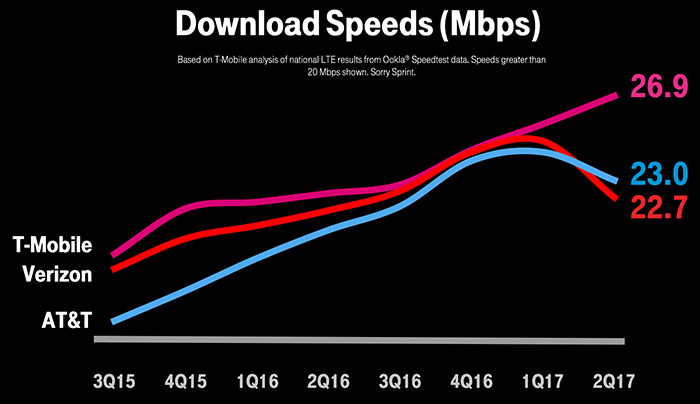
Two of the top stories in the past week in the cellular industry seem to be in direct conflict with each other.
On one hand - there are reports of carriers demonstrating real-world gigabit cellular speeds, with Verizon and T-Mobile both boasting that they will be rolling out gigabit capability in some areas and on some devices before the end of the year.
And on the other hand - new analysis released by OpenSignal shows that average real-world speeds have actually been getting SLOWER on the two largest cellular networks.
How is this possible?
How can things be simultaneously reported to be getting massively faster, and at the same time steadily slower?!?!
How can carriers be boasting about "real world" peak speeds 50x faster than what typical users are seeing today?
It all comes down to network congestion, and the ways that the carriers hope to stay a step ahead of it.
Table of Contents
Capacity Is Key / Congestion Is The Enemy
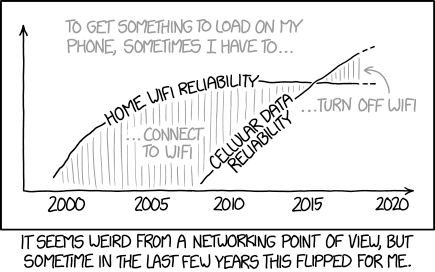
It helps to think of cellular networks as freeways.
Demands on cellular networks have been exponentially increasing as more and more people are using cellular devices for more and more data intensive things.
The return of unlimited plans in particular has sent usage skyrocketing - as now many people aren't even bothering to offload any of their connectivity needs to Wi-Fi anymore.
Cellular is usually faster and more reliable and less fuss - so why bother with Wi-Fi? Stream all the things in HD!
But this explosion in demand is turning cellular networks in some places into the equivalent of Los Angeles during rush-hour - with many towers getting increasingly congested and slow, especially during peak hours.
Occasionally cellular service can even grind to a near halt!
OpenSignal analyzed their data showing Verizon speeds slowing over the past six months, and concluded:
"The most likely explanation for this sudden drop in average speeds compared to peak speeds is that Verizon’s network is experiencing more congestion due to its new unlimited plans. By opening up the data spigot, customers start consuming more data more often, forcing them to vie against one another for more capacity on each cell site. The more data demand there is on a network, the more average speeds will drop, regardless of the network’s technological capabilities."
So what can the carriers do to fight against all this congestions?
Traffic Jam? Add More Lanes!

There is only so much radio frequency spectrum to go around - and most of what is appropriate for 4G/LTE usage it is already spoken for.
Continuing on with the highway analogy - you can't just add more lanes without bulldozing the neighborhoods your new lanes will be going through.
Much of the current LTE cellular capacity came from auctioning off the channels used by UHF TV stations, and the latest massive auction selling the 600MHz UHF spectrum concluded earlier this year.
But even though T-Mobile was the big winner and is fast-tracking new service deployment to roll out a million square miles of new coverage this year - it will take years to fully shut down the current tenants to completely clear the spectrum for usage everywhere.
You can't just bulldoze the neighborhood - you need to relocate the residents to clear the airwaves.
And once you have the spectrum ready to go - only the absolutely newest cellular devices will have radios designed to take advantage of it.
T-Mobile can only confirm that LG and Samsung will each have at least one phone ready to support 600Mhz LTE by the end of 2017. Most manufacturers will likely be waiting until 2018 before releasing compatible devices.
Widespread support for this new spectrum is still a long way off - adding capacity this way is a SLOW process.
Similarly - AT&T's expanded onto LTE Band 30 starting in 2015, and even now some new AT&T devices still lack support for this increasingly important band.
Further Reading:
- FCC’s 600MHz Auction Concludes: T-Mobile Wins Big Nationwide
- AT&T’s Summer (2015) LTE Expansions Plans: 2.3 GHz WCS (LTE Band 30) is Coming
- Feature Report (Member's Only): The Low Frequency Land Grab
Perhaps Raise The Speed Limit?
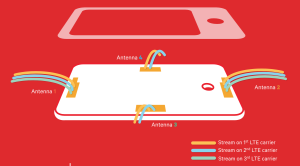
Rather than adding more lanes - another alternative to way to increase highway capacity is to let traffic travel faster, increasing the peak theoretical speeds.
Cellular carriers are pursuing this strategy by enabling features found in the most advanced LTE radios - such as LTE-A Carrier Aggregation, 4x4 MIMO, or 256-QAM data encoding.
Here is a quick recap of these technologies:
- Carrier Aggregation: This allows cellular devices connect to multiple cellular bands at once, combining them for increased speeds. Two channel aggregation is now fairly common, and three channel carrier aggregation is starting to roll out.
- 4x4 MIMO: Using four antennas at once and a lot of nearly miraculous math, when conditions are right it is possible to broadcast four signals simultaneously on the same channel - quadrupling speeds. Older LTE devices only supported 2x2 MIMO, for doubled speeds. Building a phone or hotspot with four antennas integrated however is not easy - so 4x4 MIMO support is still very rare.
- 256-QAM: The original LTE standard supported 6-bits per signal (64-QAM), the latest chipset and the LTE-A standard now support 8-bits (256-QAM). When the conditions are right, this increases the raw over the air peak speed by 33%.
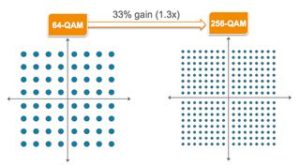
All the carriers have now begun to deploy various combinations of these technologies behind the scenes - and when an upgraded tower and a compatible phone connect, they are engaged automatically.
These technologies can have a huge impact on speed - but only the latest flagship cellular devices integrate them.
TIP: If you are shopping for a new cellular device, it is a good idea to dig and see which of these technologies are supported. They may not matter much today, but a year from now they will be increasingly critical.
Further Reading:
- Verizon Announces LTE Advanced – 50% Faster in 461 Cities
- T-Mobile Yawns At Verizon’s LTE Advanced Launch, Rolls Out 4×4 MIMO And More
- Feature Report (Member's Only): Understanding MIMO (Multiple Input, Multiple Output) – LTE Speed & Cell Booster Implications
More Towers: Reduce The Commuting Distance?
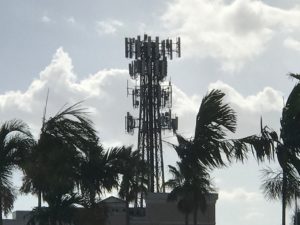
The most basic strategy carriers have to increase capacity is to build more cellular towers - replacing a single "cell" with perhaps dozens of smaller short-range ones.
Rather than a tower serving an entire town or a city block - the carriers are trying to find the real-estate and zoning permission to break things down to ever smaller chunks.
This is an expensive and time-consuming undertaking.
In some dense high-demand areas, a cell "tower" serving just a single floor of a building is possible.
Stadiums and convention centers are becoming downright encrusted in tiny small cells trying to keep up with demand.
And it is still not enough - particularly if demand continues to grow.
Unlicensed Cellular: LTE-LAA & LTE-U
There is one more new trick up the carriers sleeves to squeeze some more performance and capacity out of 4G/LTE before 5G technologies come along, starting a whole new ballgame.
And that is to spill out of cellular spectrum and onto the unlicensed spectrum used by 5GHz Wi-Fi devices.
To understand this - it helps to think of real estate. The carriers all exclusively own their various LTE channels, with the property rights broken up by the FCC into thousands of licenses across the country based on frequency and geography.
These assets are worth billions of dollars, and licenses are regularly bought, sold, and traded between the carriers looking to flesh out their networks.
But there is only so much real-estate / cellular spectrum licenses to go around in each area.
But a sizable chunk of spectrum across the country years ago was set aside for unlicensed use - meaning that anyone who played by certain rules could use the spectrum for any short-range purpose, as long as their usage does not interfere excessively with others doing the same.
Think of it like public parks - real estate set aside for everyone's enjoyment.
This spectrum is what enables Wi-Fi to work - no one needs to get an FCC licenses to set up a Wi-Fi hotspot.
But because the spectrum is unlicensed - the cellular carriers have been eyeing it up as way to offload some of their capacity needs.
As long as the carriers play by the rules - there is theoretically nothing prevent them from routing cellular traffic over this unlicensed spectrum. And earlier this year, the FCC at last gave this scheme the green light.
There are two upcoming technologies that enable this:
- LTE-U - The LTE-U (unlicensed) standard allows a traditional licensed cellular signal to be combined automatically with an unlicensed 5GHz signal, enabling more speed and capacity. T-Mobile has been pioneering LTE-U trials - and recently announced that service is live in select locations in Bellevue, WA; Brooklyn, NY; Dearborn, MI; Las Vegas, NV; Richardson, TX; and Simi Valley, CA, with more rolling out later this year.
- LTE-LAA - LTE-LAA (license assisted access) is more advanced than LTE-U, and enables greater carrier aggregation combinations so that cellular providers can combine larger amounts of unlicensed 5GHz spectrum and licensed traditional cellular spectrum. LAA will allow T-Mobile to deliver even more bandwidth and faster speeds to customers in the future. Verizon has announced that it will soon begin rolling out LTE-LAA compatible towers, T-Mobile has demonstrated LTE-LAA and aims to begin rollouts this year, and AT&T has been conducting demonstrations too.

The upside of LTE embracing the unlicensed 5GHz band is that over short distances, cell towers and compatible devices will be able to deliver absolutely ludicrous speeds. This is the gigabit LTE Verizon has been showing off this week - demonstrating 953Mbps on a real public LTE network in Boca Raton, FL.
But will all this new traffic on the 5GHz bands lead to a decrease in 5GHz Wi-Fi performance, range, and reliability?
And how well will the systems work when more than one cellular carrier in one location is attempting to use the same chunks of unlicensed spectrum, routing competing lanes of traffic through the public park?
When T-Mobile launched LTE-U, they described the background process like this:
"LTE-U devices and equipment intelligently tap into and share underutilized unlicensed spectrum without affecting other users on the same band, including those using conventional Wi-Fi. LTE-U constantly seeks the least utilized channels to maximize efficiency and performance for everyone. As demand on the Wi-Fi network increases, LTE-U backs off, and as Wi-Fi demand wanes, customers can tap into that unused capacity for LTE.
Theoretically the standards are being devised to minimize interference and issues, but there are legitimate reasons to be concerned.
Only time will tell how well these new technologies work and co-exist in practice.
Who Needs Gigabit Speeds Anyway?
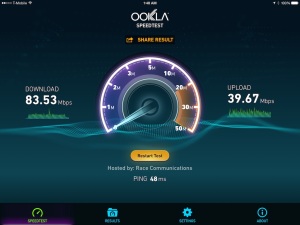
The carriers like to brag about their network speeds - but once you've passed over 50Mbps most mobile users would rarely notice the difference between 50Mbps and 500Mbps speeds.
Both are plenty fast enough for even multiple channels of 4K Ultra-HD video streaming.
So why do they keep making networks faster?
The key is capacity - if you are done with a transfer 10x faster than before, that means that the network can handle the equivalent demand from 10x the number of people.
The carriers could care less that your download took 3 seconds instead of 30 - they just care that they can serve ten customers now in the same slice of time.
Faster speeds can also benefit cellular battery life tremendously. Radios are extremely power hungry, and if a radio can finish a task faster that means more time spent in power-sipping idle mode.
In other words - faster is better, even if speeds are so fast that you no longer even notice the improvements.
After all, would you rather cruise along at 70mph or sit in stop-and-go traffic?
What About 5G?!?
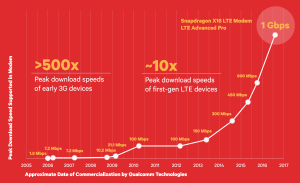
Gigabit LTE is the culmination of traditional LTE - squeezing every last possible ounce of performance out of current technologies and standards.
The performance jump between basic LTE and gigabit LTE is substantial enough that AT&T is already starting to call these upgrade tower deployments "5G Evolution" - the same way AT&T labeled its 3G technology HSPA+ network "4G" before it launched its real 4G/LTE network to compete with Verizon.
But real 5G is coming in the years ahead.
And real 5G technologies have the potential to open up vastly more spectrum for usage, leading to increases in both speed and capacity.
It is an exciting cellular future indeed!
Member Exclusive Webinar - Future of LTE Update (8/24)
 We made this post the basis of a member exclusive webinar on August 24th.
We made this post the basis of a member exclusive webinar on August 24th.
If you're one of our premium members, please log in to see the archive video embedded here.
Not a member? Come join us - and support what we do here.
We would not be able to run this resource center and dedicate so much time to covering stories like this without our members supporting us!
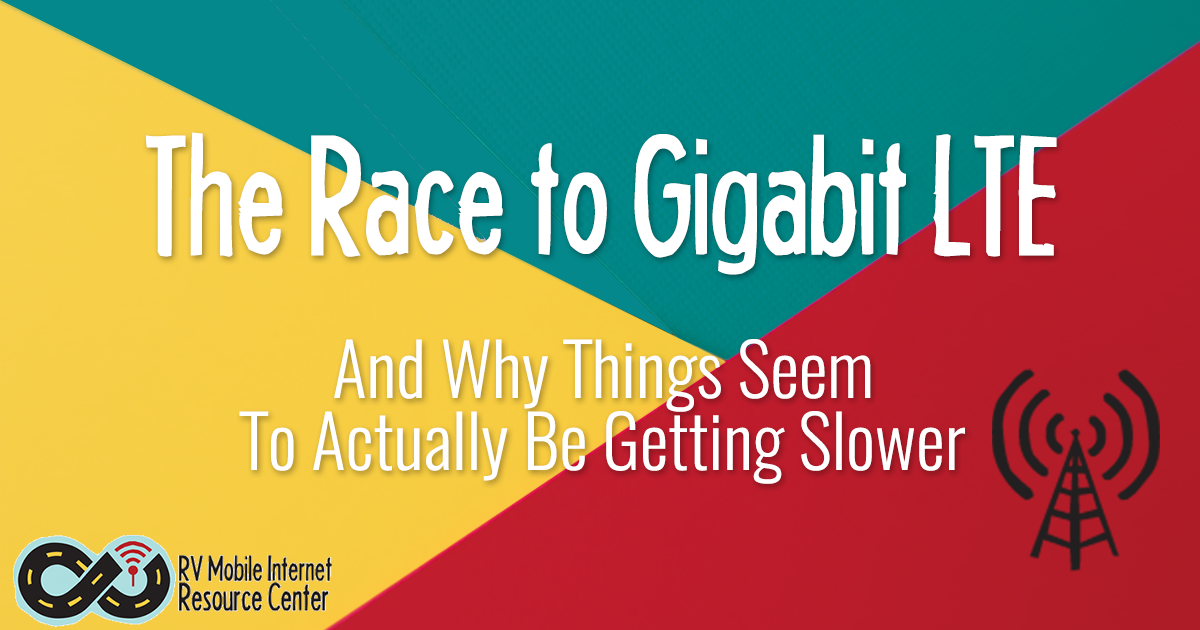

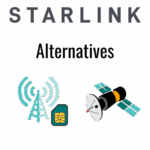
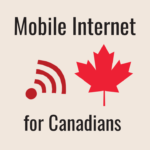




 Mobile Internet Resource Center (dba Two Steps Beyond LLC) is founded by Chris & Cherie of
Mobile Internet Resource Center (dba Two Steps Beyond LLC) is founded by Chris & Cherie of